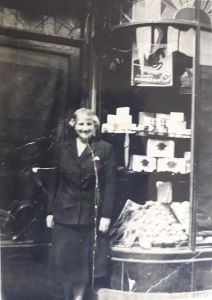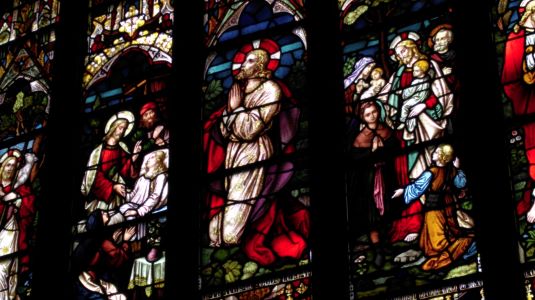Old Galway
BLAKE’S CASTLE, QUAY STREET

by Tom Kenny
This drawing of Blake’s Castle was done in 1847 by George Victor Du Noyer, a Dublin born artist, geologist, and antiquarian who spent much of his life recording natural features and archeological sites around the country in the 19th century.
Blake’s Castle is a medieval town house built c.1470 having single bay ground and first floors and a 2-bay second floor. It has a flat roof with a crenelated parapet with a projecting machicolation on supporting corbels on the top floor above the entrance. This was an opening at the parapet through which defenders could drop stuff like boiling water down on would-be attackers. It was built with coursed roughly dressed limestone rubble walls with square-headed window openings to the upper floors.
THE FORSTER STREET TIMES, 1964-1966

by Tom Kenny
Those were the years that a very enthusiastic and talented group of children in the Forster Street area ran a local newspaper each summer under the banner ‘The Forster Street Times’. Their motto “Frank, Fearless and Free” was beneath the title. It was frank, it was fearless but it was not free, it cost a penny an issue for the first two years. Economic circumstances being what they were in the mid-sixties, they were forced (because of the heavy cost of printing and the increased wages for the staff) to put the price up to two pence per issue in their third year.
THE HOLLAND INFLUENCE IN GALWAY

by Tom Kenny
In the year 1900, Patrick Holland had a travelling shop near Athenry. He later opened a shop there and is credited with having the first car in the town. In 1914 he met Dorinda Egan and it was love at first sight. They married and had five children Brendan, Michael, Maureen, Angela and John. They eventually moved to Galway in 1930, and tried to set up a business in Dominick St. but the bank would not give them the money. They eventually managed to buy the premises of Mary Leahy’s Newsagency in Williamsgate Street.
AN BEARNA

by Tom Kenny
In 1928, Galway Urban Council prosecuted a Mr. James McHugh from Bohermore for failing to comply with a notice requiring him to remove his butcher’s stall at Kingshill, Salthill, on the grounds that he had built it without authority, beyond the alignment of the adjacent houses. In fact, Mr. McHugh had already sent the council a letter requesting permission to build the stall but the council were not yet aware of their powers at the time, and their solicitors had advised them that they, the Council, did not have any control over the erection of such structures. Though they did not approve of the stall, they had failed to notify Mr. McHugh. The case went in and out of court but the stall stayed where it was.
THE GALWAY CAMOGIE TEAM 1937

by Tom Kenny
It is heart-warming to see the Galway Senior Camogie Team travelling to Croke Park on Saturday to play an All-Ireland final against Kilkenny, so, to honour the team of 2020, we thought to show you the team of 1937 who, having beaten Sligo in the Connacht final, went on to beat Antrim in KIllester in the semi-final of that year. The score in the game was Galway 5 – 0 to Antrim’s 3 – 3.
JOE HOWLEY, PATRIOT

by Tom Kenny
Michael Joseph Howley was born in Oranmore in 1895. His father died when he was just two years old. His mother was a sister of Peter Rabbitt, the proprietor of Rabbitt’s Provision Shop, Licenced Premises and Lodgings in Forster Street. She later married William Keane, the owner of Keane’s Bar in Oranmore. Joe, as he was popularly known, attended the local primary school and later went to the Bish in Galway. He obviously worked at farming as his mother once wrote “He made a good lot with trading with cattle and sheep”.
THE PERSSE WINDOWS, ST. NICHOLAS’ COLLEGIATE CHURCH

by Tom Kenny
The church of St. Nicholas of Myra was first built c.1320, making it 700 years old this year. It is the largest medieval church in Ireland and there has been constant Christian worship there since it was built. The chancel with its three windows in the south wall dates from the beginning, the nave and the transept date from about a century later. In 1477 Christopher Columbus is believed to have worshipped here. In 1484, the Church was granted Collegiate jurisdiction by which it was to be governed by a warden and vicars who would be appointed by the mayor and burghers of the town.
FATHER GRIFFIN’S BODY FOUND

by Tom Kenny
At about 3pm on the afternoon of Saturday, November 20th, 1920, William Duffy of Cloghscoilte near Barna was driving cattle locally when one of them got stuck in the mud. William noticed the part of a coat sticking out of the gap so he went for his neighbours Patrick & Thomas Lydon and later, Patrick Cloherty & Patrick Concannon from Truskey joined them at what turned out to be a grave. They uncovered part of the body and realised that it was that of Fr. Griffin. They decided to wait until it was dark so they covered up the body again, afraid that the Tans might return to remove it. William Duffy rode on horseback into Fr. O’Meehan in Montpelier Terrace to inform him of the tragedy. Fr. O’Meehan, Fr. Sexton & Canon Considine then hired Patsy Flaherty’s side car and went out to Clochsgoilte.
